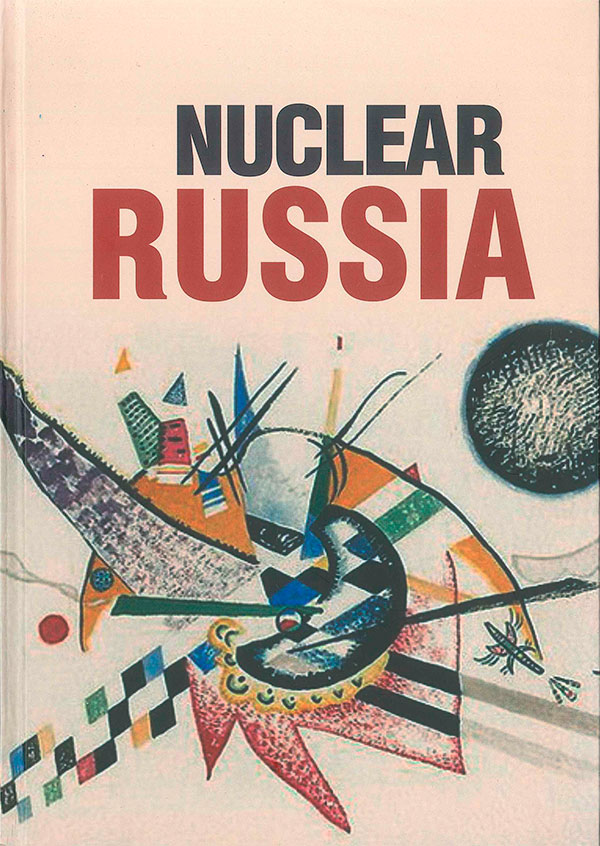Arctic Council Gets New Leader: what choice will Washington make?
U.S. Coast Guard icebreaker Healy and the
Canadian Coast Guard icebreaker Louis
S. St-Laurent side by side
In
Login if you are already registered
(no votes) |
(0 votes) |
Research Fellow, Stockholm International Peace Research Institute (SIPRI)
At a meeting in Canada on April 23, 2015 the United States will assume chairmanship of the Arctic Council for 2015-2017. These are difficult times for the Arctic, and for the Arctic Council in particular. After the previous five years of dynamic growth of cooperation, the Arctic region is faced with the problems of geopolitical rivalry between Russia and the West. The key issue over the next two years will remain the same: will the United States be able to overcome these problems and set the dialogue within the Arctic Council on a constructive path, especially considering the internal divisions in the country over Arctic policy.
At a meeting in Canada on April 23, 2015 the United States will assume chairmanship of the Arctic Council for 2015-2017. These are difficult times for the Arctic, and for the Arctic Council in particular. After the previous five years of dynamic growth of cooperation, the Arctic region is faced with the problems of geopolitical rivalry between Russia and the West. The key issue over the next two years will remain the same: will the United States be able to overcome these problems and set the dialogue within the Arctic Council on a constructive path, especially considering the internal divisions in the country over Arctic policy.
U.S. Arctic Council Chairmanship Programme
The United States prepared for its Arctic Council chairmanship by passing a number of documents in 2013–2015 detailing Washington’s policy in the region. In 2013, for example, the U.S. Government adopted its National Strategy for the Arctic Region, which elaborated the Presidential Directive of 2009 and determined the United States’ main interests in the region. The Implementation Plan for the National Security for the Arctic Region 2013 was adopted in January 2014. January 2015 saw the issue of the Presidential Executive Order Enhancing Coordination of National Efforts in the Arctic, which set up an Executive Committee to guide and coordinate Arctic policies between various federal institutions. In June, 2014 John Kerry appointed retired Coast Guard Admiral Robert Papp the first U.S. Special Representative for the Arctic.
In the autumn of 2014, Admiral Papp presented an ambitious programme for the U.S. Chairmanship of the Arctic Council called “One Arctic with Shared Opportunities, Challenges and Responsibility”, which named the strengthening the Arctic Council as an intergovernmental forum, introducing new long-term priorities and increasing awareness of the Arctic and climate change in the United States and the world as the main goals of the country’s chairmanship. The United States proposes to concentrate the Council’s activities on three areas: security and management of the Arctic Ocean; improving economic and living conditions; and addressing the consequences of climate change.
The United States’ agenda for its chairmanship reveals a shift of focus in the activities of the Arctic Council in 2015–2017. Canada’s chairmanship in 2013–2015, while recognizing the importance of climate change, concentrated on economic development in the region. By contrast, the United States will put climate change at the top of the agenda.
For example, to protect the Arctic marine environment, the United States proposes to create a Regional Seas programme in the Arctic Ocean similar to the programmes of other countries across the world and to broaden the scale of research into the problem of ocean acidification. As part of the efforts to deal with the consequences of climate change, the United States intends to step up the Arctic Council’s activities in combating soot and methane emission in the Arctic and maintain a regular dialogue among the decision-makers.
At the same time, many of Canada’s initiatives aimed at improving the housing and living conditions of indigenous peoples will be implemented. Particular attention will be paid to the problems of providing access to clean drinking water, developing sewerage systems, improving the mental health of Arctic inhabitants, etc. The United States is also planning to continue efforts to strengthen the recently established Arctic Economic Council.
A number of important activities have been planned for 2015–2017, including large-scale search and rescue exercises under the Arctic Council Treaty involving all the Arctic countries. A summit of Arctic states is also being contemplated.
Main Challenges
Carrying out such an ambition programme is a formidable task considering the fact that a number of internal and external problems exist.
Alaska and the Federal Government: Differences over Arctic Priorities
Next to the series of international problems the United States has faced in recent years (for example, the Syrian conflict, Iran’s nuclear programme, the advance of ISIS, the Ukrainian crisis), the Arctic has far less conflict-generating potential.
In the first ten years after the end of the Cold War, the Arctic was in Alaska’s zone of interests. However, Alaska has little influence on federal policy, holding only one seat in the United States House of Representatives. Besides, more than 80 per cent of Alaska’s land is under the jurisdiction of the federal authorities. This has led to various conflicts between the state and the federal government. One such conflict is over the drilling of oil wells in the Arctic National Wildlife Refuge (ANWR).
In 2015, U.S. President Barack Obama recommended expanding ANWR by 12 million acres, thus including potentially oil-rich areas along the U.S. Arctic coast in natural wildlife reserve territories where mining would otherwise be banned. The proposal triggered an uproar in the Alaska senate since, in the view of its representatives, it undermines the prospects of the state’s economic development.
Obama’s unilateral proposal to expand ANWR widened the gulf between Alaska and the federal government over the policy priorities in the region. It also made things more difficult for Admiral Papp, who tried to build a consensus over the United States’ agenda at the Arctic Council.

Amusing Delimitation: How to Neatly Split
the Arctic Shelf
The programme for the United States’ Chairmanship of the Arctic Council has certainly caused concern among Alaskan representatives. The state of Alaska Arctic Policy Commission has expressed concern over the fact that the U.S. government had been neglecting the opinion of Alaska’s representatives in determining the priorities of its chairmanship. In particular, the Commission believes the programme does not pay due attention to the issues of mineral extraction and job creation. The Commission also stressed that the people of Alaska do not support the designation of additional wilderness areas that are potentially rich in fossil fuels, because the people of Alaska should have access to these territories. Thus, the commission would prefer it – and the majority of Alaskan citizens would agree – if the Arctic Council chairmanship were to focus on economic development rather than climate change and environmental protection.
The Arctic is the Second-to-Last item on the U.S. Foreign Policy Agenda
After the end of the Cold War, the Arctic was put on the back burner in the U.S. Government’s interests. Washington’s policy in the region was fairly muddled. Under President George Bush Jr., the Arctic received scant attention. Only the Presidential Directive of 2009 provided a more or less coherent idea of the United States’ interests and goals in the region. Washington was not actively involved in the work of the Arctic Council. The situation changed with the arrival of the Obama Administration. Thus, Hillary Clinton became the first U.S. Secretary of State to attend an Arctic Council meeting in 2011. She also spoke on more than one occasion of the need for the United States to become more active in the region.
Even so, the Obama Administration was often criticized for not paying enough attention to the Arctic. Thus, in spite of the demands of the Alaska delegation at Congress, for a long time there was no U.S. representative in the Arctic or a special envoy on Arctic issues. The appointment of Robert Papp solved that problem. However, Admiral Papp does not have the rank of ambassador. Though diplomatic rank may not be the most pressing problem in the Arctic, it does indicate the degree to which the United States is interested in the Arctic.
Thus, the crisis in Ukraine and the mounting confrontation between Russia and the West have launched a spiral of instability in the Arctic.
The relatively low level of interest that the United States has in the region in the region is evident through its under-financing of Arctic projects. A frequently discussed problem is the ageing U.S. icebreaker fleet: two of the United States Coast Guard icebreakers – the Polar Star and the Polar Sea – have outlived their service lives by 30 years. A third icebreaker, the Healy, is not powerful enough to carry out many operations. For many years, the United States Coast Guard has sought, without success, to secure increased financing to build new icebreakers.
What is more, next to the series of international problems the United States has faced in recent years (for example, the Syrian conflict, Iran’s nuclear programme, the advance of ISIS, the Ukrainian crisis), the Arctic has far less conflict-generating potential.
It has to be noted that, unlike in Russia or Canada, the Arctic is not an important issue for the U.S. public (with the exception of the Alaskan people). The majority of U.S. citizens are not aware that the United States is an Arctic country. Americans are to elect a new president in 2016. Arctic issues, even though the United States will be chairing the Arctic Council, will more than likely take a back seat in the presidential race because they do not attract many votes.
The Arctic in the Context of Geopolitical Problems

infrastructure – what else are we missing
in the Arctic? Interview with Vincent F. Gallucci
During its chairmanship, the United States will have to deal with the numerous problems that faced the Arctic Council as a result of changes in the global geopolitical situation. In 2014–2015 the Arctic became part of the Ukraine conflict.
In September 2014, the United States and the European Union imposed economic sanctions against Russia that banned ExxonMobil, Shell, BP and other European and U.S. companies from taking part in joint Arctic projects with Rosneft. This affected Russia’s opportunities to develop offshore resources. With the introduction of sanctions, Russia lost its main stimulus for cooperation. Today, national security interests are becoming the main concern of Russia’s Arctic policy, under which it is building up its military muscle in the region.
The Ukrainian crisis has also influenced the mechanisms of security cooperation in the Arctic. There are no institutions for discussing military security issues in the Arctic. The mechanisms of informal cooperation in this field that started to emerge in recent years have been put on hold due to the events in Ukraine. For example, the annual meeting of the Arctic countries’ chiefs of staff was cancelled in 2014 and it is unclear whether it will be held in 2015.
Important confidence-building measures, both bilateral (Pomor between Russia and Norway) and multilateral military exercises (Vigilant Eagle between the United States, Russia and Norway) have also been suspended indefinitely.
In addition, the Ukrainian crisis and the surge of Russia’s military activities in the Arctic have brought significant changes to regional military alliances, notably to the Nordic Defence Cooperation (NORDEFCO) between Denmark, Finland, Iceland, Norway and Sweden. In February 2015, Sweden called on the alliance’s members to enhance military technical cooperation within NORDEFCO, to strengthen cooperation in air and naval defence and to restore the early warning system, including in the Far North.
Thus, the crisis in Ukraine and the mounting confrontation between Russia and the West have launched a spiral of instability in the Arctic. Suspending the dialogue on military security among Arctic states increases the danger that military activities in the region could be misinterpreted or understood the wrong way. While it may not trigger an arms race or an armed conflict in the region, it will lead to increased tensions.
Conclusions

Is Arctic Cooperation Falling Prey to the Ukraine
Crisis? Interview with Andrey Zagorsky
As of today, cooperation within the Arctic Council continues in spite of the Ukrainian crisis and geopolitical tensions. This was the most important achievement of Canada’s chairmanship in 2013–2015, when the status of the Arctic Council as an important inter-state forum for all the Arctic states was preserved.
If the United States wants to fulfil all the three declared goals and hold high-level meetings, considerable efforts will need to be exerted by all the members of the Arctic Council, especially Russia. It will be difficult, for example, to implement the agreement on search and rescue and Arctic Ocean oil spill response without close cooperation with Russia. Large-scale exercises would lose much of their value without Russia’s participation. Furthermore, to advance such important issues as environmental protection and climate change, the Arctic should remain a stable and peaceful region. The introduction of new long-term priorities calls for a consensus, which is hard to achieve in an atmosphere of mistrust and tensions.
At this time, fulfilment of the tasks set by the United States looks fairly problematic. Although Admiral Papp has stressed the importance of – and the commitment to – supporting Russia as a key member of the Arctic Council and to “keep the lines of communication open” [1], it is becoming ever more difficult to isolate the Arctic from world geopolitics, all the more so since Arctic cooperation is fairly low on the United States’ list of priorities compared with putting an end to the war on European borders. Russia is likely to mistrust any U.S. initiatives.
However, if the situation in Ukraine takes a turn for the better in the next two years, the Arctic and the Arctic Council may provide a potential platform for a reset between Russia and the West, because there are no problems in the region that cannot be solved by diplomatic means.
Failing that, the United States will have to look for a more limited agenda during its chairmanship and seek to consolidate the results of previous years. In other words, it will try to minimize damage rather than build up cooperation.
Robert Papp’s team will most likely have to use this time to upgrade Arctic issues on the U.S. foreign policy agenda and increase U.S. infrastructure in the Arctic, in order to look for a consensus between the state of Alaska and the federal government and increase awareness among everyday Americans citizens of their country’s “Arctic status”.
In any case, the chairmanship offers the United States a unique opportunity to assert itself as one of the key Arctic players.
Thus as it takes on the chairmanship of the Arctic Council the USA will have to make a strategic choice. It can pursue a policy aimed at maintaining the Arctic’s status as a zone of cooperation, which in turn will require close cooperation with Russia. In this case Washington may act as the leader of a process of conciliation and use the accumulated experience of bilateral and multilateral cooperation in the region to build a mutually advantageous dialogue. Or it can choose to make the Arctic a platform on which the USA and the countries of Europe will try to throw down a challenge to Russia as part of the struggle with the crisis in Ukraine. In this case Arctic cooperation will unfortunately become a hostage to the geopolitical disagreements between Russia and the West.
1. Arctic challenges, UI Stockholm, Sweden. January 16, 2015. URL: https://www.youtube.com/watch?v=KO6tEPx8ZoI
(no votes) |
(0 votes) |





